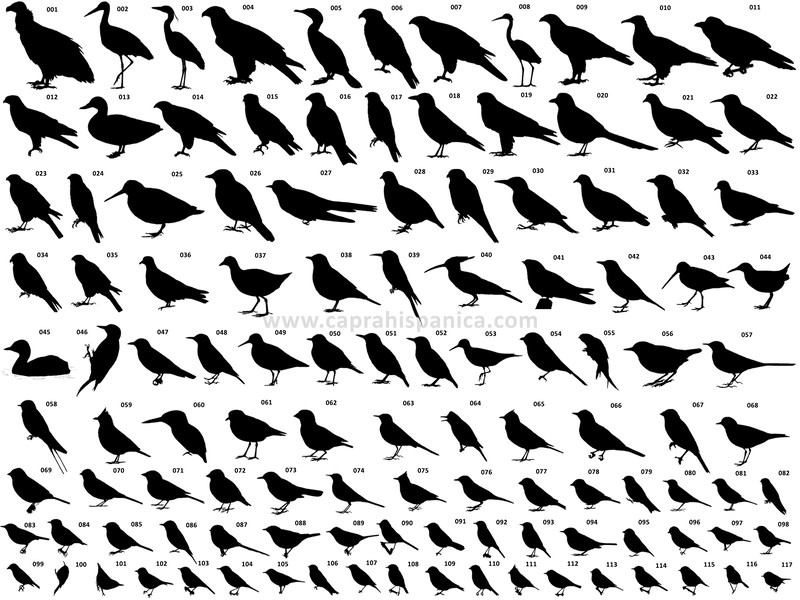LEARNING BIRDING BY IMPRESSION

The gestation of the method
When I started writing the book, in my mind there was no other idea than to find a method, as simple as possible, that would allow the observer to acquire the skill of the Birding by impression (jizz) in a reasonable time, and not in the long years that are needed if identification is used via plumage, (see article 3 conscious and unconscious). When I wrote the book, I had no idea what the dynamics of the method would be like, even though its structure did have it. The necessary elements and the way to operate them were emerging little by little from observations, ideas, readings, trial and error. Naturally the method had to be scientifically consistent and it had to work! And he did.
How does Birding by impression work? It starts, from the operation of images observed in the field, the subconscious memory, much more stable and faster than the cortical memory, which is what the brain uses after a classical scientific analysis. In this way, jizz improves the efficiency, speed of ID, reliability, representativeness and universality to the ID via plumage. And this is true at the species level and is crucial for the ID of very similar species and the ages and sexes of highly variable plumage species.
Potential users
Once the method was developed, I had to see how professionals could benefit from its use. To do this, I drew up a list of professionals who could benefit from incorporating the method. They highlighted the cases of professors, researchers, consultants, managers, conservationists, disseminators, journalists of nature and indirectly, through them, students and self-taught learners children, adolescents and non-professionals. The potential users of this technology are: professional or amateur observers of birds, teachers, educators and environmental journalists. The method can be the subject of exhibitions in museums and zoos. It is susceptible of being explained in chats and conferences, workshops or short courses. The authors of bird guides can include the impression as an added factor to the plumage. Professional researchers, librarians and booksellers will also find the technology useful. Biologists, zoologists, engineers, environmentalists, technical and forest engineers, bird census enumerators, professionals of learning with the right side of the brain, consultants, ornithological guides, technicians of environmental departments in governments and municipalities, NGO ornithologists, as well as professionals from conservation and nature study institutions, whose motto is change and innovation; and in a near future, in 2020, the students of the Finnish educational system.
Learning mode
Being a new method, there are no people familiar with it and professionals, researchers, consultants, managers, conservationists, disseminators and nature journalists will be among the professors, from which the self-taught students will emerge, in charge of learning and transmitting it. People with sufficient maturity to be self-taught, can acquire skill without major problem just by following the argument and the exercises proposed in the book.
By requiring a certain amount of knowledge, perseverance and regularity in field trips, cabinet work and execution of the exercises, many people will prefer in many cases to be guided by professors with proven didactic and zoological or ecological experience.
Of course, children and adolescents need a teacher to guide them in this endeavor, introduce them, supervise them and allow them to comment among themselves on their field experiences. And those in charge of organizing workshops and workshops for children and adolescents in the countryside should follow a similar path.
Non-university beginners and experienced amateurs should also attend an introductory course to identification by printing.
To introduce university students, theory lessons and a few field trips to operate the cards would be sufficient, within a subject of taxonomy, zoology or ecology.
For students of master's and doctoral students who want to work with birds should be offered the possibility of studying a practical theoretical subject of BBI.
In the same way, whatever your professional level, many professionals with less than 10 years identifying via plumage, would be grateful to be able to pass an online or BBI course with which they would increase their efficiency and understanding when it comes to identifying birds.
And although professionals with more than 10 years of experience identifying via plumage, have acquired, subconsciously, the skill of BBI, it would be good to know how the brain works in the jizz because that would allow them to increase their reliability, representativeness and performance as well as giving their skill a universal reach, if they have to travel and develop with habitats and birds for them new. Even for experts who deal with the same birds, knowing another method would allow them to judge and open their mind to new ways of doing, in addition to understanding how the brain works to become expert by conscious impression.
Finally, special mention must be made of self-taught students. Are those people who, based on the method, are able to elaborate basic information about the birds to be seen and the habitat in which they live in a specific territory, prepare periodic outings to the field and operate the variables of the cards. These people, in addition to experiencing in themselves the acquisition of such skill without having to spend long years in acquiring it unconsciously, to see how their skills improve in a patent manner, they can also transmit their knowledge to the following levels. As their status as pioneers, users and teachers, they are called to play a very important role in the development of identification by printing.
In the next articles I will describe what should be the path to be followed by the student observers according to their current level, as well as make some technical considerations to which their teachers have to be who should know the method perfectly and adapt their teaching to each level.
English book in Amazon: https://www.amazon.com/dp/1981629378/
Spanish book in Amazon: https://www.amazon.com/dp/1978245297/


Comentarios
Publicar un comentario